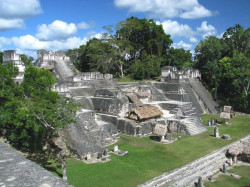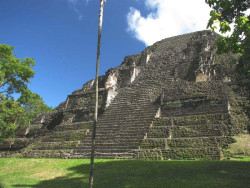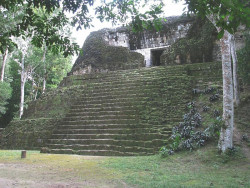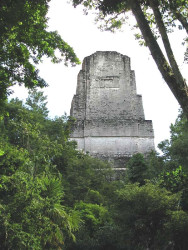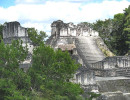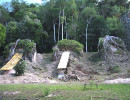Tikal in Guatemala
-
1 main plaza of tikal in guatemala

-
2 major pyramid in the main acropolis of tikal

-
3 northern section of the main acropolis of tikal
-
5 view of the main acropolis of tikal
-
6 main acropolis at tikal up close
-
9 mayan pyramid in central american jungle
-
7 excavated mayan pyramid at tikal
-
13 smaller pyramid inside the mayan ruins of tikal
-
15 part of the main acropolis of tikal
-
14 moss covered steps of a mayan temple in tikal guatemala
-
10 palace at the main acropolis of tikal
-
11 mayan temple in tikal in guatemala
-
4 mayan temple at the tikal ruins in guatemala
-
8 major pyramids of the main acropolis in tikal
-
12 tall mayan pyramid in tikal
-
30 corner of the main acropolis at tikal in guatemala
-
17 part of the acropolis complex of tikal
-
18 smaller pyramid within the mayan ruins of tikal 800a
-
20 eastern section of the main acropolis in mayan tikal
-
24 partially restored mayan buildings at guatemalas tikal
-
21 section of palace in tikals main acropolis
-
22 tikal archeological site in the guatemalan jungle
-
26 one of the structures of the main acropolis of tikalz
-
31 corner of the main acropolis at tikal in guatemala
-
27 glimpse of tikals maya ruins through the trees
-
36 small temple in the jungle surrounding tikal
-
25 mayan structures covered by centuries of over grown vegetation
-
32 another of the many structures around tikal national park in guatermala
-
16 mayan pyramid towering above the tree line of tikal
-
19 top of a pyramid in tikal
-
23 partially restored mayan buildings at tikal
-
28 maya pyramid partially uncovered at tikal guatemala
-
35 one of the mayan temples around tikal national park
-
29 the grass covered slope of a mayan pyramid
-
34 courtyard in the main acropolis of tikal
-
33 steps up to a temple in the mayan ruins of tikal
-
37 mayan calendar found at tikal in guatemala
-
38 mayan stone carvings found at tikal
-
40 top of a small temple
-
42 excavating a temple out of a hillside
-
43 back courtyard of the main acropolis in tikal
-
41 temples towering above the canopy
-
44 small temple in ruins at tikal
-
39 mayan face carved in stone at tikal
The Ancient Metropolis of Tikal in Guatemala
Tikal (Tik’al in modern Mayan orthography) is the ruin of an ancient city, which was likely to have been called Yax Mutal, found in a rainforest in Guatemala. It is one of the largest archeological sites and urban centers of the pre-Columbian Maya civilization. It is located in the archeological region of the Petén Basin in what is now northern Guatemala. Situated in the department of El Petén, the site is part of Guatemala's Tikal National Park and in 1979 it was declared a UNESCO World Heritage Site.
Tikal was the capital of a conquest state that became one of the most powerful kingdoms of the ancient Maya. Though monumental architecture at the site dates back as far as the 4th century BC, Tikal reached its apogee during the Classic Period, c. 200 to 900. During this time, the city dominated much of the Maya region politically, economically, and militarily, while interacting with areas throughout Mesoamerica such as the great metropolis of Teotihuacan in the distant Valley of Mexico. There is evidence that Tikal was conquered by Teotihuacan in the 4th century AD. Following the end of the Late Classic Period, no new major monuments were built at Tikal and there is evidence that elite palaces were burned. These events were coupled with a gradual population decline, culminating with the site's abandonment by the end of the 10th century.
Tikal is the best understood of any of the large lowland Maya cities, with a long dynastic ruler list, the discovery of the tombs of many of the rulers on this list, and the investigation of their monuments, temples, and palaces.
The name Tikal may be derived from ti ak'al in the Yucatec Maya language; it is said to be a relatively modern name meaning "at the waterhole". The name was apparently applied to one of the site's ancient reservoirs by hunters and travelers in the region. It has alternatively been interpreted as meaning "the place of the voices" in the Itza Maya language. Tikal, however, is not the ancient name for the site but rather the name adopted shortly after its discovery in the 1840s. Hieroglyphic inscriptions at the ruins refer to the ancient city as Yax Mutal or Yax Mutul, meaning "First Mutal". Tikal may have come to have been called this because Dos Pilas also came to use the same emblem glyph; the rulers of the city presumably wanted to distinguish themselves as the first city to bear the name.













































